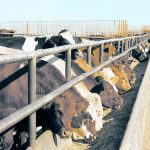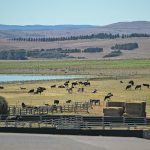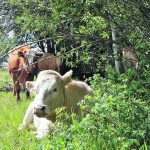Some ranchers have slowly begun taking the first steps to boost cattle production after inventory shrank due to a years-long drought that dried up pastures and hiked feeding costs.
Tag Archives U.S. cattle herd

U.S. ranchers cautiously rebuild
Consumers have paid record beef prices due to low supply; meat packers want larger cattle herds to reduce cattle prices

U.S. herd rebuild expected soon
U.S. cattle producers have started rebuilding the nation’s herd or are close to doing so, says Tyson Foods chief executive officer Donnie, after supplies dwindled to a 74-year low.

Return of US drought delays cattle-herd rebuilding, hurting Tyson Foods
Chicago (Reuters) — The return of drought in U.S. cattle-producing areas is delaying ranchers’ plans to expand production after the nation’s herd shrank to its smallest level in seven decades, farmers and analysts said. Tight cattle supplies are squeezing meatpackers, including Tyson Foods, which reports quarterly earnings on Tuesday, and consumers facing high beef prices. […] Read more

Australia cashes in as U.S. cattle herd shrinks
A slump in U.S. beef production results in record Australian meat exports and big bucks for processors and producers
COOMA, Australia (Reuters) — In a refrigerated room, around two dozen employees in hats, gloves and blue plastic aprons carve and pack carcasses into boxes within minutes of their slaughter. The Monbeef slaughterhouse, owned by Bindaree Food Group and located about 100 kilometres south of Canberra, Australia, processes approximately 200 cattle a day, up from […] Read more
U.S. cattle herd reaches 1951 low
REUTERS — The total number of U.S. cattle fell to its lowest level since 1951 as of Jan. 1 in the herd’s fifth consecutive year of decline, U.S. Department of Agriculture data shows. Ranchers slashed their herds as dry weather in the western United States reduced the land available for grazing and raised feeding costs. […] Read more



